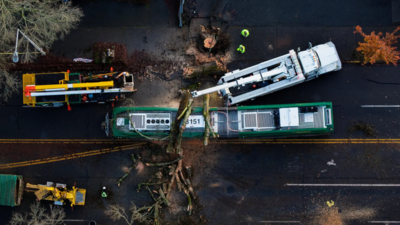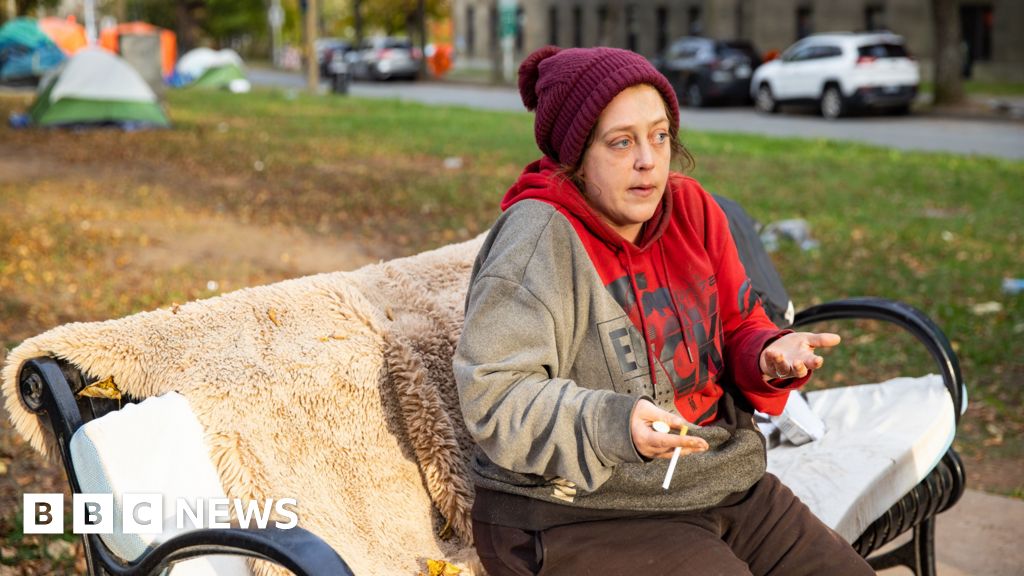
Weather experts across the United States have alerted that another winter conditions might affect Thanksgiving week, whilst California and Washington are still managing the aftermath of storm-related damages and electrical disruptions.
In California, after two storm victims were found in flood waters on Saturday, officials prepared for additional rainfall whilst dealing with existing flooding and minor earth movements from the previous weather system.
The Sacramento-based
national weather service
has announced a
winter storm warning
for the Sierra Nevada continuing until Tuesday. Substantial snowfall is anticipated at elevated areas, with winds possibly reaching 55 mph (88 kph). Approximately 4 feet (1.2 metres) of snow is expected, with the most significant accumulation predicted for Monday and Tuesday.
Rain and snow will affect the Midwest and Great Lakes areas on Monday, whilst the East Coast will experience the most significant impact during Thanksgiving and Black Friday.
A weather system is expected to bring rainfall to the Southeast early Thursday before moving towards the Northeast. Boston and New York areas might experience rain and strong winds, with possible snow in northern New Hampshire, northern Maine and the Adirondacks. Should the system move further inland, mountain regions might see more rain than snow.
"The system doesn't look like a powerhouse right now," Hayden Frank, a meteorologist with the weather service in Massachusetts, said Sunday. "Basically, this is going to bring rain to the I-95 corridor so travellers should prepare for wet weather. Unless the system trends a lot colder, it looks like rain."
Frank indicated that no significant storms are forecast nationwide for the weekend, suggesting favourable driving conditions for Sunday travellers. Eastern temperatures will decrease whilst western regions warm up.
Two fatalities occurred in the Pacific Northwest following a rapidly intensifying "bomb cyclone" that struck the West Coast last Tuesday. The storm brought strong winds that damaged properties and vehicles and caused widespread power cuts in Washington state before moving to Northern California. Approximately 25,000 Seattle residents remained without electricity on Sunday evening.
Two bodies were discovered on Saturday in Sonoma County's wine region, north of San Francisco. A walker found a man's body in a swollen stream near Santa Rosa, whilst rescue teams later recovered another body from a vehicle in floodwaters near Guerneville, according to Deputy Rob Dillion. Investigators are assessing whether these incidents were storm-related.
Santa Rosa experienced its wettest three-day period on record, receiving about 12.5 inches (32 centimetres) of rain by Friday evening, according to the San Francisco Bay Area National Weather Service. Flooding affected vineyards in nearby Windsor.
The risk of floods and mudslides continues with more rain expected from Sunday, although this system will be less severe than the previous atmospheric river event.
"However, there's still threats, smaller threats, and not as significant in terms of magnitude, that are still going to exist across the West Coast for the next two or three days," weather service forecaster Rich Otto said.
As rainfall moves eastward, substantial snowfall is possible at higher Sierra Nevada elevations and parts of Utah and Colorado. California's Mammoth Mountain, which received 2 feet (.6 metres) of fresh snow recently, might receive an additional 4 feet (1.2 metres) before this system clears by Wednesday.
The Midwest and East Coast expect heavy rainfall during Thanksgiving, with possible snow in Northeastern states.
Recent precipitation in New York and New Jersey helped address wildfire concerns and drought conditions in Pennsylvania. The rainfall provided welcome relief after an unusually dry autumn.
"It's not going to be a drought buster, but it's definitely going to help," said Bryan Greenblatt, a National Weather Service meteorologist in Binghamton, New York.
Northeastern Pennsylvania, including the Pocono Mountains, experienced heavy snowfall. Higher areas reported up to 17 inches (43 centimetres), with less accumulation in valley cities. About 35,000 customers across 10 counties remained without power.
In New York's Catskills region, nearly 10,000 residents lacked power on Sunday morning, following heavy snowfall two days prior.
West Virginia's precipitation helped alleviate the state's worst drought in over two decades and benefited ski resorts preparing for their upcoming season.

 3 hours ago
5
3 hours ago
5









